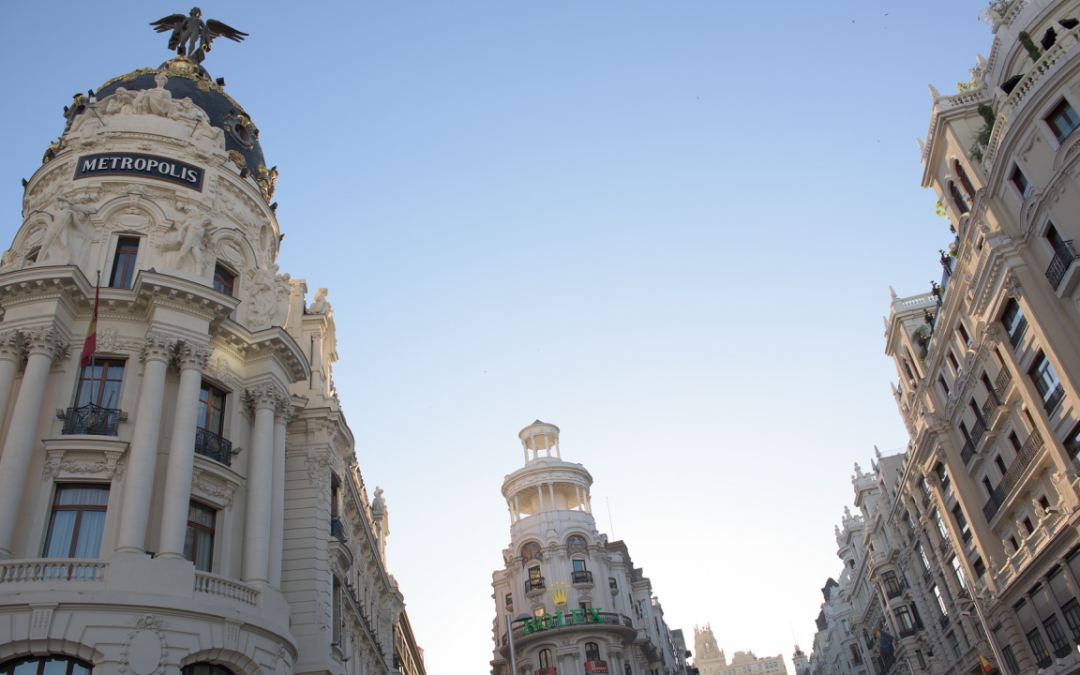I have been in Madrid for two weeks now and have found a lot of this city deeply interesting. As the capital of one of Europe’s most important countries I would expect nothing less. Spain is important economically, politically and culturally, with a richness of history few nations enjoy. Madrid is the beating heart of Spain. She is the countries largest and most vibrant city, full of beautiful monuments and buildings. It would be difficult to walk anywhere in this city without spotting multiple beautiful sights. But this city is much more than it’s natural beauty. In this article I will go over ten facts about Madrid you should know.
10: Madrid is The 4th Richest City in Europe
The Spanish economy has not been running smoothly over the last decade or so – in fact it’s part of a group of other nations known derisively within Europe as P.I.G.S. Spain is obviously the S. Yet still Spain is the world’s 14th largest economy and unemployment is falling. Madrid is the largest city of the country so we could expect it to have a significant economy of it’s own. Most of Spain’s large corporations are based in Madrid and as a service economy a lot of business from South America floods into Madrid. The standard of living is rising, and so is the value of local property to match this growth. Be under no illusion – Madrid is a wealthy city.
9: Madrid Has An Ancient Egyptian Temple
The temple of Debod is an ancient Egyptian temple that in the mid 20th century was dismantled and transported to Madrid where it was carefully reassembled. It now stands within the city as a monument to ancient Egyptian civilization. It is not a big temple but so old to be considered an international treasure. It stood for thousands of years in upper Egypt but when the construction of a dam threatened to flood the area and destroy it, there was an international appeal to save it. The Egyptian government chose Spain to have it as the country had recently helped them preserve many other ancient constructions. That is how an ancient Egyptian temple came to stand in Madrid, where it still is today. It’s thought to date back to the start of the 2nd century BC, and at one point was a noted structure of importance to the Roman Empire. Who knows what lies in store for the Temple of Debod in future. Either way, not mentioning it in a list of facts about Madrid would be mad.
8: The Name Madrid is Arabic
Arabic has had significant influence on the Spanish language. It goes back to when Spain was under the rule of Islamic North Africans. They successfully invaded the region in the 8th century and set up their own kingdom there. All of Spain eventually full under Catholic rule again but the process of that lasted many centuries. In fact it was only in 1492 that Islamic rulers within Spain lost their last stronghold and were forced into Africa. For much of their time in power they possessed the largest city in Europe and were exceptionally wealthy. It’s no surprise, given the length and depth of their power, that Arabic made such an impact on Spanish languages. The name Madrid is actually derived from the Arabic word “Magetihk” – a term that roughly means “a land of many streams.
7: It Wasn’t Always The Capital of Spain
Madrid has largely been the capital of Spain since the independent countries that would one day form Spain were unified. But for a brief period of time the capital of Spain was a smaller and much less well known city called Valladolid. Between 1601 and 1606 this smaller city was the capital but natural disasters and lack of infrastructure doomed this not to last long. The city then declined slowly both economically and in terms of population as it wasn’t seen as an important place any more. Luckily the spread of rail travel gave new life to the city and Valladolid once again became a vibrant place. Still, many find it hard to believe this relatively unknown place was once chosen over Madrid to be Spain’s capital city.
6: Madrid’s Weird Coat of Arms
Madrid has a very unique coat of arms – a bear leaning against a tree as if looking to eat fruit from it’s branches. The symbolic use of a bear to represent Madrid goes back to medieval times. In 1212 Christian forces battling the Islamic caliphate still in Spain carried banners depicting a bear. It’s unclear quite why they used the bear to represent them but it has been a symbol of Madrid ever since. A strawberry tree was soon added to symbolize the fact that the local Madrid council had authority and control over the forests in and around what is now known as Madrid. That’s how the city got it’s unique coat of arms, which has slowly been evolving since.
5: Madrid is Really High
Madrid is actually the highest European capital city in terms of altitude. It’s altitude is about 700 meters, which explains the grand views of mountains and rolling hills that surround Madrid. This is also why Madrid is so much less humid than other cities in similar climates. The cool winds you feel while walking Madrid are dry as they sweep over the mountains around Madrid. Founding cities at high altitude has been a common practice in Spain, to avoid the thick humidity of low altitudes. That’s why so many of Europe’s highest cities are within the country. In fact Europe’s highest city by altitude is a Spanish settlement called Soria.
4: The City Was Founded By Muslims
As I previously mentioned, Spain was for a long time ruled by North African Muslims. It was during this time that Madrid was first mentioned in historical documents. At this time Madrid was not an important place at all, in fact it was used as a fortification to defend the much more valuable city of Toledo. Not all of Spain was under Islamic rule at this time. In the north were Christian kingdoms who were not shy about their ambition to retake all of Spain for Catholicism. In 1085 Toledo was taken by the Christians and the largely valueless Madrid fell under their control along with it. It’s not unheard of for a capital city to be founded by foreign empires. London was founded by the Romans as Londinium.
3: The Bloody Market
One of the most popular attractions of Madrid is the Rastro flea market. Locals have been buying and selling all kinds of goods here for over four centuries. But 400 years ago the market was a lot different than today. It was primarily a meat market. Dead animals would be dragged through the market to be processed into meat and leather. This left a permanent trail of blood running through the market. The name “El Rastro” literally means the trail. But like I said, the flea market today is a lot different, less bloody and a popular tourist attraction.
2: Bullfighting is still big Here
When you think of Spain, bullfighting comes to mind. In fact the bull is often used to represent Spain. Despite objections from those concerned with animal rights and Madrid being a large modern city, Bullfighting remains part of the culture here. Madrid boasts the largest Bullring in Spain, as well as some of the world’s most respected bullfighting schools to maintain the practice. Other major cities in Spain have stopped any kind of bullfighting but Madrid openly shows it’s deep ties with the sport.
1: The Fight For Madrid
During the Spanish Civil War, Madrid was controlled by republican forces. The republicans were opposed by the nationalist Franco and his supporters. Franco eventually won the war with the help of Nazi Germany. But through the war, republicans held Madrid with an iron grip. Above the streets of Madrid was hung a banner that read “ No pasarán (They shall not pass)”. Their use of this phrase became so famous that when Franco finally took Madrid he declared “Hemos pasado (We have passed)”. Although Madrid fell to the nationalists after a long siege, the legacy of it’s antifascist stance can still be seen today. It’s not uncommon to see antifascist depictions within Madrid. Nationalist forces were disciplined and united whereas republicans were ideologically diverse and often poorly trained and supplied. Looking back, it seems like Franco was always going to capture Madrid and declare victory in the Spanish civil war. But for years it was a real stronghold for his opponents. Franco then ruled Spain as dictator until his death in 1975.

